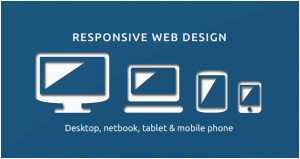We’ve all experienced the frustration of trying to view a website configured for a desktop computer on a smartphone. Fonts that are too small that to read and buttons that are too tiny to press are frustrating. Even turning your smartphone to landscape mode doesn’t really help, and in the end, it’s easier to leave the site in search of an alternative that has been configured for mobile users.
Two websites, or one responsive site?
Some companies offer two variations of their website: one configured for desktop and laptop screens, and the other designed for smartphones and small tablets. Whilst this approach certainly works, it’s time-consuming and more expensive for your business. You have to pay for two separate websites, and every time you need to update your information, change your pricing structure or add new content, you’re obliged to do it twice.
As a recent article in Forbes points out, maintaining one responsive website frees up your time, which can be better spent on other aspects of your business.
How does a responsive website work?
A responsive website requires just one set of information, which automatically configures itself according to the type and size of the device on which it is being viewed. Search engines will reward you for a responsive design by ranking you higher, giving you the chance to attract even more visitors to your site. Even though it may initially cost a little more than arranging for two separate websites, the end result should be increased visitor numbers and greater customer satisfaction.
Make sure that you source a reputable web design company to design your responsive site to ensure that it displays seamlessly across a wide range of devices, browsers and operating systems. You can find great web design in Kent or Kincardineshire, with some companies, such as http://www.eqmedia.co.uk/, offering a complimentary SEO audit that allows you to see for yourself the benefits that responsive design could give your rankings.
Responsive design allows for a variety of screen shapes, sizes and orientations, adapting fluidly to ensure that your visitor has the best possible experience. Your site will display in both portrait and landscape modes, allowing for the fact that mobile users have no mouse and must tap, pinch or swipe. Buttons are bigger and navigation alters to accommodate different screen sizes.


